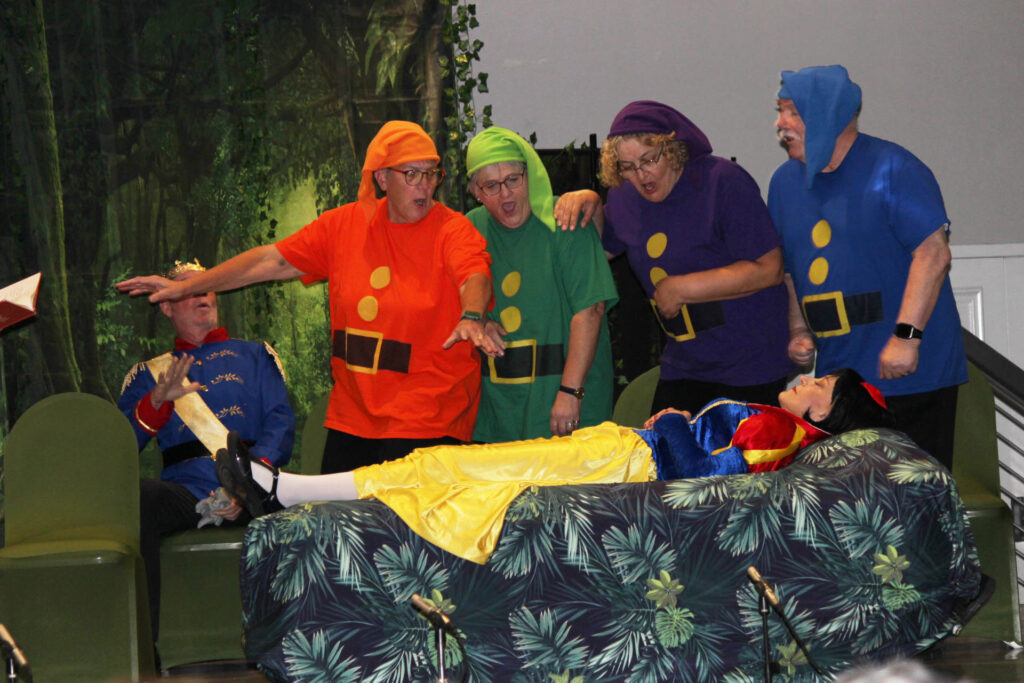Sure, we all have problems. However, we usually resolve them and move on with things. However, audiences attending the recent Broadway Playhouse production, “Once Upon a Time,” were made aware of insurmountable problems not only with their favorite colors but also with those of their beloved fairytale characters.

After the cast’s opening song, “True Colors,” a narrator steps forward to tell the audience that they will be hearing from the assembled crayons, who are visible in their large crayon box. Based on the children’s book “The Day the Crayons Quit” by Drew Daywalt, each color complains to the child owner of a coloring book. Grievances by gray and blue have to do with their feelings of overuse. Gray is almost always used to color large animals, such as elephants and whales, while blue is the primary choice for the ocean and sky. Beige feels it is always in competition with tan and brown, while white feels empty, and black is disappointed at only being used to make outlines. An actual physical feud is ongoing between yellow and orange as to the true color of the sun, while red and purple are bored, always being used for hearts, Santa Claus, grapes, and dragons.
However, most of the audience’s sympathy went to peach, who was unable to emerge from the box at all, because as she told the audience, “I am naked.”
As the audience was left to ponder these slights, Carolyn Hoffman enthralled them with a stirring rendition of “Somewhere Over the Rainbow,” which was followed by a spirited dance routine by Pamela and Walter Galas as they “Eased on Down the Road” both songs from well-known productions of “The Wizard of Oz” and “The Wiz.”
With the stage now set as a deep, dark forest, characters appear from backstage to take their places for the featured presentation “Snow … sort of … White” by Ken Bradbury. We see Snow White, a mirror, some dwarves, an elegant queen, a prince, ugly stepsisters, and other characters that seemingly do not have a place in the story.
A narrator steps forward to begin reading “Once Upon a Time” when she is immediately interrupted by a taunting queen. “Is this too precious or what?” The tone is now set; the narrator is never able to return to the story she wishes to read, as she is constantly being interrupted by Snow White, the four dwarves, the queen, who is also the wicked witch, the ugly stepsisters, Prince Charming, and at times, the mirror.
Tossed into the mayhem is a psychiatrist who thinks the narrator may have been abused as a child and some person who is just sitting in a chair, hoping to get a part to play. He becomes the narrator’s hero as he spouts some ridiculous lines cobbled from the Gettysburg Address, the Declaration of Independence, and several other familiar writings. He tells the narrator to stand up and “be someone,” leading her to offer a rendition of “Climb Every Mountain.” The show continues with the woodsman, a pig’s heart, and a strange dwarf, Weirdly, all leaving the audience chuckling as they scratched their collective heads.
A lively medley of Disney songs, sung by the cast, provided a happy ending to the entertainment, which was directed by Cheryl Richardson and Joanne Houston. As a lyric from one of the songs exclaims, “a time for laughter and a time for tears.” That it was.




